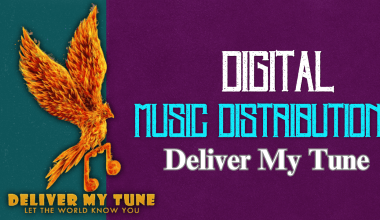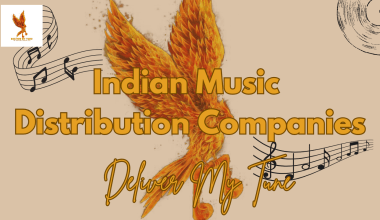Are you an artist looking to share your music with the world? If so, getting your track on iTunes is a great step. iTunes is still one of the most popular platforms for music lovers, and having your song available there can help you reach a wider audience. But how do you get started? Don’t worry; distributing your track on iTunes in 2025 is easier than ever.
Why You Should Distribute Your Track on iTunes
As an independent artist, having your music on iTunes can boost your career. It allows fans to purchase and download your tracks, giving you a chance to earn revenue while expanding your fan base. Plus, iTunes connects with Apple Music, meaning your music could be featured in playlists and recommendations.
In 2025, music distribution has become more streamlined, and there are many options to help you get your songs on platforms like iTunes with minimal effort. Whether you’re an emerging artist or an experienced musician, distributing your track on iTunes can open up new opportunities.
Steps to Distribute Your Track on iTunes in 2025
Step 1: Prepare Your Music
Before you distribute your track on iTunes, you need to ensure your music is ready for the public. This means having a high-quality recording, properly mixed and mastered. Listeners expect clear and professional sound, so investing time in your track’s quality will pay off in the long run.
Make sure your track meets iTunes’ technical requirements. In 2025, the standard format is typically a high-quality WAV or FLAC file. Your track should also be free of clipping or distortion.
Step 2: Choose a Music Distributor
You can’t upload your track directly to iTunes; you’ll need a music distributor. There are several reliable services that can help distribute your track on iTunes and other platforms. Some popular options include:
- Delivermytune
- CD Baby
- DistroKid
- AWAL
- Ditto Music
Each distributor has its own pricing and features, so choose one that fits your budget and goals. Some services charge a one-time fee per track, while others offer yearly subscriptions for unlimited uploads.
Step 3: Register Your Track
Once you’ve selected a distributor, it’s time to upload your music. You’ll need to provide details such as:
- Track title
- Artist name
- Genre
- Album artwork (iTunes requires a 3000×3000 pixel image)
- Release date
- Copyright information
Having all of this information ready will make the process smoother.
Step 4: Set Your Pricing and Distribution Options
When distributing your track on iTunes, you have the option to choose your pricing. Decide if you want to sell your track as a single or as part of an album. Some distributors even let you set different pricing for various regions.
You’ll also want to select where your music should be available. Most distributors automatically place your track on multiple streaming and download platforms alongside iTunes, such as Spotify and Amazon Music.
Step 5: Submit and Review
After filling out all the necessary details, it’s time to submit your track for distribution. Your distributor will review your submission to ensure it meets all guidelines. This process can take a few days, so be patient.
Make sure to double-check all the information before hitting submit. A small mistake could delay your release.
Promoting Your Track on iTunes
Once your track is live on iTunes, your work isn’t done. To maximize exposure, you’ll need to promote it effectively. Here are a few ways to do that:
Share your iTunes link on platforms like Instagram, TikTok, Facebook, and Twitter. Engaging posts with behind-the-scenes content or lyric snippets can encourage more people to check out your music.
Collaborate with Influencers
In 2025, influencer marketing is a powerful tool. Partnering with social media influencers or bloggers in your genre can help spread the word about your new track.
Submit Your Track to Playlists
Many Apple Music and independent playlists accept submissions from artists. Getting your track featured in a popular playlist can significantly boost your streams and downloads.
Run Ads
Consider using paid ads on platforms like Facebook or YouTube to target potential listeners who enjoy your style of music.
Tracking Your Performance
Most music distributors provide analytics to help you track how your track is performing. You can see where your listeners are located, how many downloads you’ve received, and which platforms generate the most sales.
Use this data to adjust your marketing strategy and focus on the areas that bring the best results.
Common Mistakes to Avoid When Distributing Your Track on iTunes
While distributing your track on iTunes is relatively straightforward, there are some common mistakes to avoid:
- Poor Quality Music: Ensure your track sounds professional.
- Incorrect Metadata: Double-check track names, artist info, and release dates.
- Ignoring Promotion: Simply uploading your track isn’t enough; marketing is crucial.
- Not Protecting Your Rights: Register your music with performance rights organizations to ensure you receive royalties.
Conclusion
Distributing your track on iTunes in 2025 is a fantastic way to reach new listeners and build your music career. With the right preparation, distributor, and promotion strategy, your music can find its way to fans all around the world.
So what are you waiting for? Start preparing your track today and get it on iTunes to share your music with the world!
Related Articles:
For further reading, explore these related articles:
- How to Release Your Song on JioSaavn with No Upfront Fees
- How to Release Your Song on JioSaavn in 2025: A Step-by-Step Guide
For additional resources on music marketing and distribution, visit DMT RECORDS PRIVATE LIMITED.






